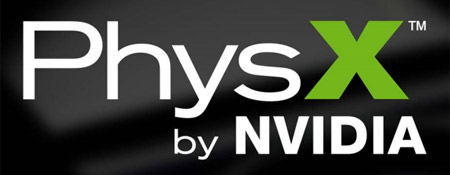What are NVIDIA PhysX and CUDA?
Before we get on to benchmark results, let's take a quick recap on what NVIDIA's PhysX and CUDA technologies have to offer.
CUDA, which stands for Compute Unified Device Architecture, is a C programming environment that enables developers to code algorithms to be executed on an NVIDIA GPU. It's available on NVIDIA's GeForce 8, 9 and GTX 200-series graphics cards, as well as its Quadro line.
With it, developers can utilise the GPU's massive parallel processing capability to run applications that benefit from the ability to run hundreds of thousands of threads simultaneously. Ideal, then, for audio and video encoding or medical imaging, for example.
Then there's NVIDIA PhysX, a physics engine originally developed by Ageia and later acquired by NVIDIA and implemented into its GeForce 8, 9 and GTX 200-series graphics cards. Using CUDA, NVIDIA's aforementioned many-core GPUs can offload physics calculations from the CPU to provide greater physics processing power.

What you'll get, says NVIDIA, is enhanced visual effects that wouldn't be possible on any other card. PhysX isn't a take it or leave it technology, though. Users without a PhysX-enabled GPU will still obtain smaller levels of PhysX effects from the CPU - but go with a GeForce and you'll get much much more, that's the message from NVIDIA.
We've all heard the promise, but one problem remains - where are the hundreds of must-have PhysX-enabled titles? At present, the number of titles that support GeForce PhysX is limited, and NVIDIA's list of upcoming titles - which includes Cryostasis, Nurien, MKZ, Backbreaker, Bionic Commando, Empire: Total War, Aliens: Colonial Marines and Borderlands - isn't exactly making us rush out to buy a PhysX-capable graphics card.
Still, GeForce PhysX is slowly but surely gathering support, so let's see what it can do, shall we?
For our benchmarks, we'll be putting PhysX to the test using NVIDIA's tailor-made Soft Body demo, and CUDA through its paces with Cyberlink's Power Director 7.0. Both will be carried out on our familiar testbed, featuring a 3.2GHz quad-core Intel Core 2 Extreme QX9770 processor with 12MB of L2 cache, an eVGA nForce 790i Ultra SLI motherboard, 4GB of Corsair XMS3 PC1066 memory, and either a ZOTAC GeForce 8800 GT AMP! or a 216-core Inno3D GeForce GTX 260 OC.
On to the results...









